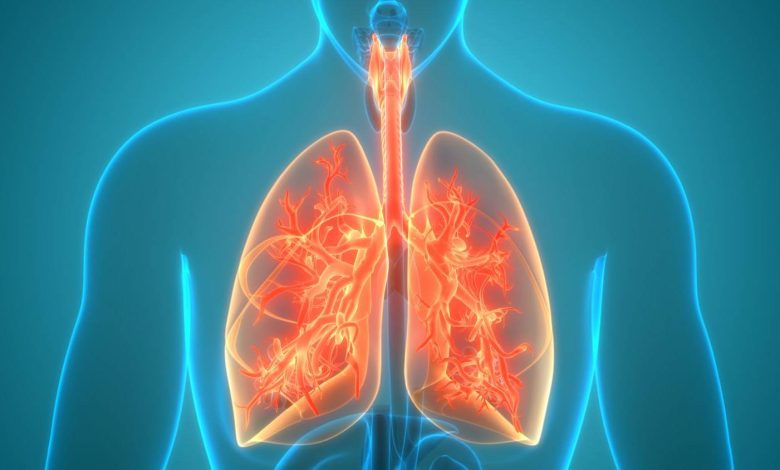Rapid shallow breathing, tachypnea: what is this, causes, symptoms, diagnostics, treatment, prevention

Rapid shallow breathing; Tachypnea; Breathing – rapid and shallow; Fast shallow breathing; Respiratory rate – rapid and shallow
Rapid shallow breathing, also known as tachypnea, represents a state, in which the person breathes faster, than usual, but with more shallow breathing. The normal respiratory rate for an adult is 12-20 breaths per minute, but with rapid shallow breathing, the respiratory rate increases to more than 20 breaths per minute. The condition can be caused by various underlying diseases and can lead to serious health problems., if left untreated.
Causes of rapid shallow breathing
There are several factors, which can cause rapid shallow breathing, including:
- Infection. Respiratory infections, such as pneumonia, bronchitis or flu, can cause rapid shallow breathing, as the body tries to get more oxygen into the lungs.
- Chronic obstructive pulmonary disease (COPD). It's a chronic lung disease, which can lead to shallow breathing, as the body tries to get enough oxygen in the lungs.
- Asthma. Asthma attacks can cause rapid shallow breathing, as the airways become narrow and constricted, making it difficult to breath.
- Anxiety and panic attacks. Rapid shallow breathing may be a symptom of anxiety or panic attacks., how the body reacts to psychological stress.
- Heart disease. Rapid shallow breathing may occur with heart disease, such as heart failure, when the heart cannot pump enough blood to meet the body's need for oxygen.
Symptoms of rapid shallow breathing
In addition to rapid breathing, there are other symptoms, which may accompany rapid shallow breathing, including:
- Chest pain or tightness
- Fast heartbeat
- Breathlessness
- Lightheadedness or dizziness
- Sweating
- Fatigue
When to contact a healthcare professional
If you or someone you know is experiencing rapid, shallow breathing, it is important to seek medical attention as soon as possible. This is particularly important, if the person has any of the following symptoms:
- Chest pain
- Fast heartbeat
- Breathlessness
- Lightheadedness or dizziness
- Sweating
- Fatigue
Diagnosis of rapid shallow breathing
The doctor will begin by taking a history and performing a physical examination.. He may also order such tests, like a chest x-ray, blood tests and lung function tests, to help diagnose the underlying cause of rapid shallow breathing.
Treatment for shortness of breath
Treatment for shortness of breath depends on the underlying cause. Some common treatments include:
- Antibiotics for respiratory infections
- Inhaled medicines to treat asthma or COPD
- Oxygen therapy for low oxygen levels
- Medicines for anxiety or panic attacks
- Treatment of heart failure, such as diuretics or ACE inhibitors
Home treatment for shortness of breath
In addition to seeking medical attention, there are some home treatments, which may help relieve the symptoms of shortness of breath:
- Deep breathing exercises. Slow, deep breaths can help slow breathing and reduce symptoms of rapid, shallow breathing..
- Relaxation Techniques. Relaxation Techniques, such as yoga, meditation or deep breathing, can help reduce anxiety and stress, which can cause rapid shallow breathing.
- Avoid Triggers: if rapid shallow breathing is caused by allergies or environmental triggers, it is important to avoid these triggers as much as possible.
Prevention of rapid shallow breathing
There are several steps, you can take, to prevent shortness of breath, including:
- Maintaining a healthy lifestyle: healthy eating, regular exercise and quitting smoking will help keep your lungs healthy and prevent shortness of breath.
- Stress Management: stress can cause rapid shallow breathing, so it's important to find ways to deal with stress, eg, through exercise, meditation or talking with a counselor.
- Avoid Triggers: if you have known triggers for rapid shallow breathing, such as allergies or certain environmental irritants, it is important to avoid these triggers, as much as possible.
- Watching for symptoms: regular monitoring of respiratory rate and contacting a doctor, if you notice any changes, may help prevent shortness of breath from becoming a serious health problem.
In conclusion, rapid shallow breathing can be a serious condition, requiring immediate medical attention. Understanding the reasons, symptoms and treatment options for shortness of breath is essential to maintain good health and prevent complications. If you or someone you know is experiencing rapid, shallow breathing, seek medical attention as soon as possible.
Used sources and literature
force m. Approach to the patient with respiratory disease. In: Goldman L, Schafer AI, eds. Goldman-Cecil Medicine. 26th ed. Philadelphia, PA: Elsevier; 2020:chap 77.
McGee S. Respiratory rate and abnormal breathing patterns. In: McGee S, ed. Evidence-Based Physical Diagnosis. 4th ed. Philadelphia, PA: Elsevier; 2018:chap 19.
